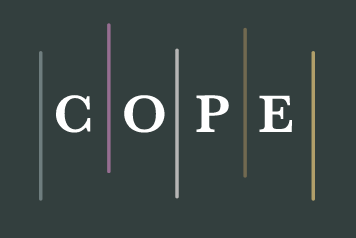Hijab (Veil) from the Islamic Perspective: An Interpretive Analysis from the Quran and Scholars' Views
DOI:
https://doi.org/10.58355/maqolat.v3i2.145Keywords:
Hijab (veil), Islamic Perspective, Quran, Scholars view, JusticeAbstract
This research examines the concept of the Hijab (veil) from both Quranic and scholarly perspectives, with a particular focus on its role in promoting justice and equity. Utilizing a qualitative research methodology, the study draws on primary sources, including key Quranic verses such as Surah An-Nur (24:31) and Surah Al-Ahzab (33:59), which provide foundational principles regarding modesty, dignity, and ethical conduct. Secondary sources, including books, journal articles, and online publications, are analyzed to contextualize scholarly interpretations and explore the broader significance of the Hijab.An interpretive research approach is employed to uncover the multifaceted meanings of the Hijab as a spiritual, social, and ethical practice. Classical and contemporary Islamic scholars’ perspectives are critically examined to highlight the Hijab’s dual function as a personal act of devotion and a societal symbol of identity and respect. The findings demonstrate that the Hijab is deeply rooted in Islamic teachings, reflecting principles of justice, equity, and mutual respect. Furthermore, the study addresses prevalent misconceptions about the Hijab and its association with gender roles, illustrating its broader implications within Islamic thought. This research contributes to a nuanced understanding of the Hijab, emphasizing its enduring relevance and its role in fostering justice and equity within contemporary Muslim societies.
Downloads
References
Abdulssalm, (2006). Gender and sexuality: An Islamic perspective. Sari, 24, 35–48.
Abdalati, H. (1991). The Islamic Concept of Woman: It’s Role in Society. Islamic Book Trust, Kuala Lumpur, Malaysia.
Abdullah, A. R. (1999). Islamic dress code for women. Riyadh: Darussalam Research Division.
Agar Muhammed, A. C. (2015). Penkal Tholoi Purithal Sila Valikattalhal (Some Guidelines for Women Work). Colombo: IBH Publication.
Al-Qurtubi, Abu ‘Abdullah Muhammad ibn Ahmad. (2006). Al-Jami’ li-Ahkam al-Qur’an, (Vol. 6). Beirut: Dar al-Kutub al-‘Ilmiyyah
Al-Nawawi, Yahya ibn Sharaf. (1997). Al-Majmu’ Sharh al-Muhadhdhab (The Collection of Explanations of the "Al-Muhadhdhab" by Al-Shirazi). Dar al-Fikr, Beirut, Lebanon.
Al-Nawawi, Y. (1997). Al-Majmu’ Sharh al-Muhadhdhab, (Vol. 4). Dar al-Ma’rifah.
Ambikai Forman, (n.d). In the Name of Security: How the Burqa Niqab Ban is Impacting Muslim Women. https://groundviews.org/2019/05/22/in-the-name-of-security-how-the-burqa-niqab-ban-is-impacting-muslim-women/ [9 October 2024].
At-Tabari, Abu Ja'far Muhammad ibn Jarir. (1997). Tafsir al-Tabari (The Commentary of At-Tabari). Translated by several scholars. Dar al-Ma'arifa, Beirut, Lebanon.
Bagawi, J.A. (n.d.). The Muslim Women’s Dress code According to the Qur’an and Sunna, Kuwait: Ministry of Awqaf & Islamic Affairs.
Boulanouar, A. W. (2006). The Notion of Modesty in Muslim Women’s Clothing: An Islamic Point of View. New Zealand Journal of Asian Studies, 8(2): 134-156.
Chowdhury, N. A., Bakar, H. S. A. & Elmetwally, A. A. (2017). Misconception of Islamic Apparel, Niqab: A Phenomenological Approach. Jurnal Komunikasi Malaysian Journal of Communication Jilid, 33(4): 204-217.
Doi, A. R. I. (1990). Women in Shari'ah (Islamic Law). Kuala Lumpur, Malaysia: A.S Nordeen.
Hamza, N., Ismail, A., Mustari, M. I. & Basiron, B. (2014). The Realisation of Covering Aurat among the successful Women in Malaysia. Al- Hikmah 6(2): 129-143.
Ibn Kathir, I. (2000). Tafsir al-Qur'an al-Azim (Vol. 3). Beirut: Dar al-Ma’rifah.
Ibn Qudamah, Muwaffaq al-Din. (1997). Al-Mughni (The Encompassing). Dar al-Hikmah, Beirut, Lebanon.
Ibnouf, F.(2015). The Gender Equality and Women's Human Rights in Islamic Text (Quran and Hadith). https://www.researchgate.net. Publication/2748999721, [30 June 2022].
Marikkar, N. (2019). Covering face an Islamic viewpoint. http://www.srilankaguardian.org/2019/10/covering-face-islamicviewpoint.html. [6 October 2023].
Mansoor, M. A. M. (2020). Sirupanmai Samooha Amaippil Muham Mooduvathu Avasiyama? (Is it necessary to cover the face in a minority context?) Akurana: Al Quran Preliminary Open College.
Omardeen. (2021). Important message with regard to face cover of Muslim women. https://acju.lk/en/news/acju-news/1739-important-message-with-regard-to-face-cover-of-muslim-women.[9 October 2024].
Okon, E. E. (2013). The status of women in Islam. IOSR Journal of Humanities and Social Science (IOSR-JHSS), 10(2), 21-27. https://doi.org/10.32014/2019.2518-1467.130.
Qaradawi, Y. A. (1960). The lawful and the prohibited in Islam. Beirut: Al Falah Foundation for Translation, Publication, and Distribution.
Rahim, S. A., Rahim, R. F. A., Panatik, S. A. & Muhammad, S. N. (2022). Gender equality from an Islamic perspective. In 2nd World Conference on Gender Studies (WCGS 2021), pp. 1-7.
Raheema, C. C. & Omar, M. M. M. (2017). The status and rights of women mentioned in Islam. International Journal for Studies on Children, Women, Elderly, and Disabled, 1, 135-141.
Rizvi, S. S.A. (1992). Hijab: the dress of Modesty in Islam, Tanzaniya: Dares Salaam Bilal Muslim Mission Tanzaniya.
Roald, A. S. (2001). Women in Islam: The Western Experience. London and New York: Routledge.
Siddiqa, A. & Ruby. (2018). Status of women in Islam and the present Indian scenario. INSANCITA: Journal of Islamic Studies in Indonesia and Southeast Asia, 3(1), 1-12.
Sulaiman, K.-D. O. & Raifu, F. G. (2020). Investigating the importance of wearing hijab by Muslim women. INSANCITA, 5(1), 1–18.
Yufenu, S. (2017). Challenges faced by Muslim women. https://aljumuah.com/the-challenges-faced-by-working-muslim-women [6 October 2023].
Downloads
Published
How to Cite
Issue
Section
License
Copyright (c) 2025 Mohamed Sulthan Ismiya Begum

This work is licensed under a Creative Commons Attribution 4.0 International License.






















